Curriculum Overview
What will I learn?
At the Radio Connection, you'll be learning a lot more than just how to work at a radio station. By training one-on-one with a broadcasting professional, you'll learn communications skills that can take you into many different realms of broadcasting, from radio to television, and even the expanding field of Internet streaming and YouTube hosting. That's why our curriculum covers everything you need to launch a broadcasting career in the 21st century. It's also why our curriculum has been designed by professionals within the radio and broadcasting industry, so you are introduced to a variety of skills to fit your goals and interests, whether you want to be a radio DJ, voiceover talent, sportscaster, news anchor, or even host your own Internet show!
The best thing about the Radio Connection curriculum is that you never have to go it alone: your mentor will be there to help you every step of the way. You'll be learning one-on-one from a highly experienced broadcasting professional, externship course work will take place on-the-job in a real broadcasting facility. You'll learn at your own pace while maintaining a course schedule promoting an on-time graduation of the six-month program.
What is the curriculum like?
In approximately 24 weeks Radio Connection students will have the opportunity to learn about the many facets of radio broadcasting and being a powerhouse creator in today’s fast-paced industry. Our approach enables hardworking, driven individuals to learn and sharpen their skills inside of an actual radio station, podcasting studio, or even from their own homes, depending on what works best for their needs and goals.
Radio Connection program is 6 months long, with an intensive combination of online coursework, skill practice and assisting your mentor on-the-job at an externship site. The curriculum is approved by the state agencies and follow a program sequence while the student completed a prescribed number of hours assigned to each course area aligned with the online classroom hours and practice/externship hours. Here's just a taste of what you'll learn:
- History of broadcasting
- FCC rules and regulations
- Breathing and voice exercises
- Speech training
- Copy and commercial writing
- News broadcasting
- Sports announcing
- Public service announcements
- Disc jockey announcing
- Preparing your resume
- Preparing your audition recording
- Television broadcasting
- YouTube hosting
- …and much more!
INTRODUCTION

This lesson will give the student a general overview of Radio history and terminology, and will highlight some of the skills they will be learning throughout this course.
- Study and Practice Tips
- Broadcast History
- Broadcast Power
- FCC Rules & Regulations
- Positions in Broadcasting
- Assignment #1: Broadcast History and FCC Rules and Regs.
SECTION 1: Breathing and Voice Exercises
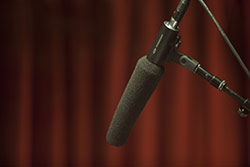
In this lesson the student will learn useful exercises to develop proper diaphragmatic breathing, how their voice is produced, and proper use of the voice. There are also voice exercises, voice and speech training, guidelines to common problems, warm-up exercises, speech vocabulary, and exercises for proper consonant sounds.
- Useful Exercises to Develop Proper Diaphragmatic Breathing
- How Your Voice is Produced
- Proper Use of the Voice
- Voice Exercises
- Voice and Speech Training
- Common Problems
- Warm-up Exercises
- Speech Vocabulary
- Exercises for Proper Consonant Sounds
SECTION 2: Commercial Announcing and Writing
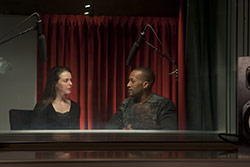
In this lesson the student will learn various types of commercial announcing and interpretation. The assignments will allow students to demonstrate their capabilities and learn about commercial announcing through practice sections, timing, announcing, writing and copy writing.
- Commercial Types
- Interpreting Commercial Copy
- Assignment #2: Commercial Announcing
- Commercial Practice Session
- Assignment #3: Commercial Timing and Announcing
- Commercial Writing
- Assignment #4: Copy Writing/Announcing
SECTION 3: News Broadcasting
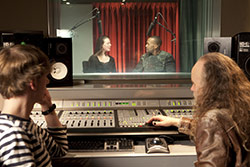
In this lesson, the student will learn about news policy and procedures toward investigative reporting, news conferences, business and political news polling, program notice, equal opportunity, freedom of information, riot coverage, terrorism, religions, radio hotlines, radio stringers, news broadcasting, and news practice sections.
- News Policy and Procedures
- Investigative Reporting
- News Conferences
- Business and Political News
- Polling
- Program Notice
- Equal Opportunity
- Freedom of Information
- Controversial Matters
- Interviews
- Correspondent Reporters
- Riot Coverage
- Terrorism
- Religions
- Radio Hotlines
- Radio Stringers
- Assignment #5: News Broadcasting
- News Practice Session
- Assignment #6: Newscast with Commercials
- News Writing Techniques
- Special Headline News Exercise
- Assignment #7: News Actuality
SECTION 4: Sports Announcing
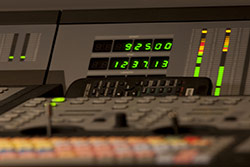
In this lesson, the student will learn how to articulate sports announcing effectively. The assignments will allow students to practice their speech patterns, commercial aspects of sports, and lastly announcing sports scores.
- Tips for the Sportscaster
- Assignment #8: Sportscast
- Sports Practice Session
- Assignment #9: Sportscast with Commercials
- Sports Practice Session
- Assignment #10: Announcing Sports Scores
SECTION 5: Public Service Announcements
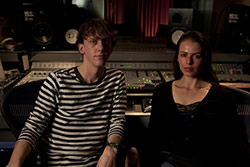
In this lesson the student will learn how to clearly vocalize public service announcements and how to effectively communicate those ideas to the listener. The assignment will help students practice this style of communication.
- Assignment #11: Public Service Announcements
SECTION 6: Weather Reporting
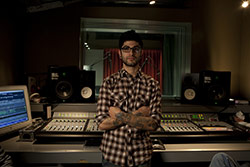
In this lesson, the student will learn how to vocalize weather forecasts. Important to this, students will also learn voice problem remedies to aid their vocal cords and help their delivery.
- Assignment #12: Weather Forecasts
- Voice Problem Remedies
SECTION 7: Disc Jockey Announcing
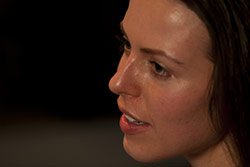
In this lesson, the student will learn different music formats as well as various elements in the control studio, interviewing, and recording program and maintenance logs. The assignment will allow students to explore interviewing and will demonstrate the ten commandments of announcing, including ad-libbing.
- Music Formats
- The Control Studio
- Interviewing
- Program/Maintenance Logs
- Assignment #13: Interview
- Professional Tips for the Announcer
- The Announcer’s Ten Commandments
- Ad-libbing
- Assignment #14: Disc Jockey Show
- Assignment #15: Disc Jockey Ad-lib Show
SECTION 8: Ratings
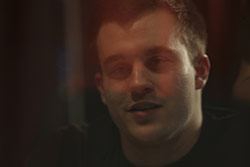
In this lesson, the student will spend a great deal of time getting familiar with Radio Audience Estimates. Students will also spend time learning about both the Arbitron Ratings Glossary and the Arbitron Metro Radio Market Survey Schedule. The assignment will allow students to delve into Station/Record Surveys & Self-Evaluation.
- Radio Audience Estimates
- Arbitron Ratings Glossary
- Arbitron Metro Radio Market Survey Schedule
- Assignment #16: Station/Record Surveys and Self-Evaluation
SECTION 9: Broadcasting Glossary
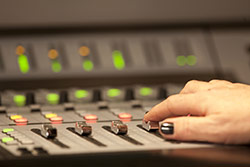
In this lesson, the student will learn about proper hand and gestures associated with Radio & Television broadcasting. The assignment will allow students to learn about proper Audition Tape Format in preparation for their Audition Demo Tape.
- Radio and Television Hand Signals
- Assignment #17: Audition Tape Format
- Assignment #18: Audition Demo Tape: Final Assignment
SECTION 10: Getting That First Job In Broadcasting
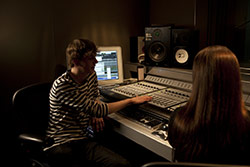
This lesson will offer the student different methods to approach and land their first industry gig! Students will learn about different Broadcast Positions and Duties that exist at radio stations, as well as how to prepare their resume and cover letter, and closing statement.
- Broadcast Positions and Duties at Radio Stations
- Preparing Your Resume
- Resume Example
- The Cover Letter
- The Personal Interview
- Closing Statement
Coursework is delivered via distance education and completed at a location determined by the student. Externship locations can be up to 60 miles away from the student’s address. The externship mentor will work with each student on structuring a specific schedule, the student agrees that he/she will be available to meet with the mentor for a minimum of two sessions per week.”
HOW DOES IT WORK?
As a Radio Connection student, you'll be paired with a working broadcasting professional for one-on-one training in your field of interest. If you want to be a morning show DJ, we'll pair you with an experienced DJ; if you want to be a sportscaster, we'll place you with a sportscaster. If you want to enter the exiting world of Internet broadcasting and YouTube hosting, we'll place you with an expert in this area. Our curriculum adapts to fit any of these areas, and your mentor will fill in the gaps with tips, tricks and secrets you can only learn on-the-job.
WHAT DOES IT COST, AND WHAT DO I GET FOR THE MONEY?
The cost of our 6-month apprenticeship (externship) course is $13,680. Click here to see our payment options.
There are no hidden fees or surprise costs; everything you need in order to graduate is included in this one fee, including:
- Our structured course curriculum
- One-on-one instruction with a mentor, a broadcasting pro who specializes in your area of interest
- All institutional fees to include all books and required materials.
- Tutoring
- Your own web page
- Training in marketing yourself through social media
- Up to 12 months of job placement assistance upon graduation
WHAT MAKES YOUR PROGRAM BETTER THAN THE OTHERS?
We're glad you asked! Here are just a few reasons:
- We keep you out of debt. Our exceptionally low tuition rate means you can graduate with little or no debt, so you can concentrate on your broadcasting career, not on how you're going to pay your debt.
- Learn on-the-job. You'll be learning as an apprentice (extern) in a real radio station or broadcasting facility, which means you'll learn the business from the inside.
- A structured yet adaptable course curriculum. The added advantage is that you go through the curriculum in a real-world context.
- A real radio/TV professional is training you one-on-one. You're learning from someone who makes a living doing what you want to do!
- Connections, connections, connections. As with any creative industry, training alone won't get you where you want to go. The radio industry lives and breathes by connections—the kind you can only make in the real world, not in a classroom or lab. Your curriculum is taught completely on-the-job in a real broadcasting facility, and your "classroom" is the real world. This means you get the chance to meet, interact and network with people of influence—the decision makers in this industry who can one day hire you!

